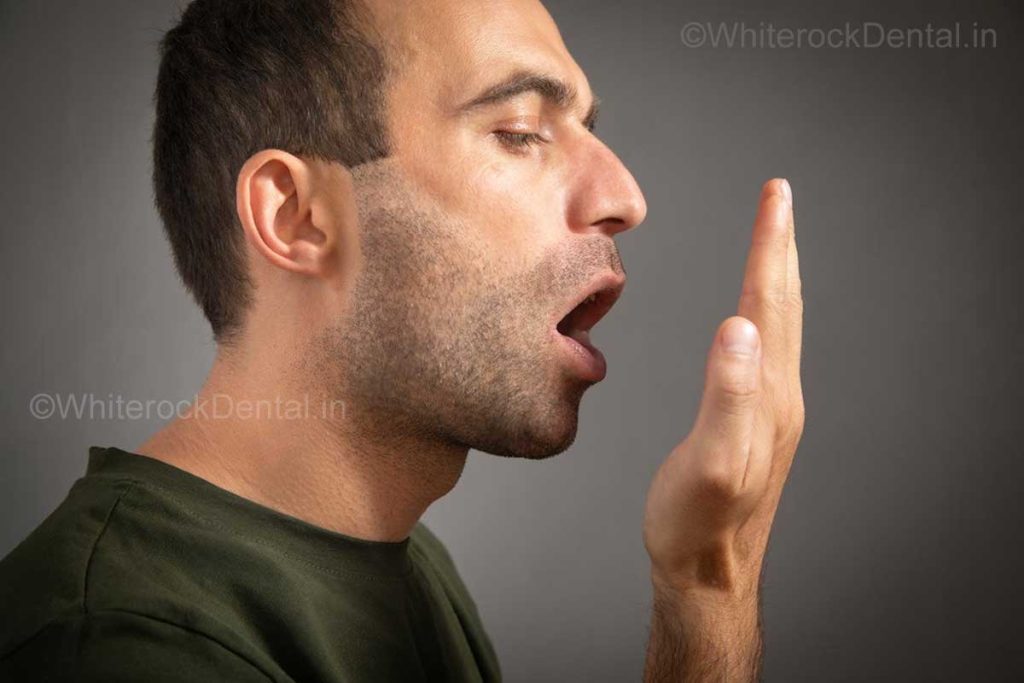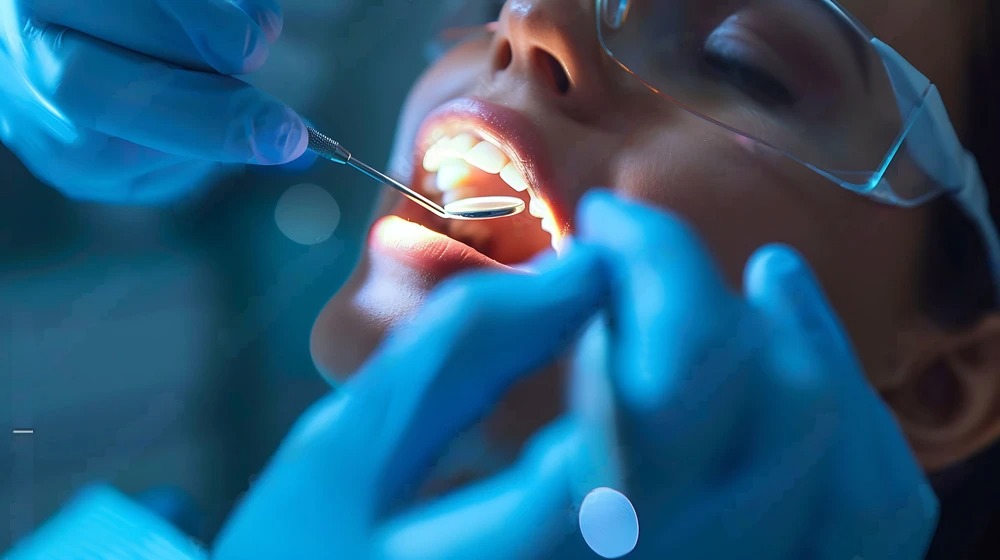
Persistent Bad Breath Linked to Pulp Infection
-By Dr Pauravi Hegde MDS
Hello and welcome! I’m Dr Pauravi Hegde MDS, a practicing dentist in Mumbai who has seen countless patients over the years with one particularly embarrassing and frustrating issue: persistent bad breath. Now, bad breath (or halitosis) can stem from all sorts of causes—ranging from your love of onion-laced street food to simply not brushing well enough. But did you know that persistent bad breath can also be linked to an infection deep within your tooth, known as a pulp infection?
In this article, we’re going to explore how something as hidden as a pulp infection can lead to foul breath that won’t go away, no matter how many times you swish mouthwash or pop breath mints. If you live in Sion, Chembur, Prabhadevi, Worli, King’s Circle, or Chunabhatti, you’ll likely recognize the common hustle and bustle of Mumbai life—and how easy it is to let dental visits slide until a problem becomes impossible to ignore. Let’s dive in and figure out what’s really going on behind the scenes.
1. Introduction
Why Bad Breath Could Be More Than You Think
Everyone experiences a little bad breath in the morning or after eating strong foods (hello, garlic chutney!). However, when bad breath is persistent—lingering for days, weeks, or even months despite good oral hygiene—it could point to a more serious problem. While gum disease or simple dryness of the mouth often get the blame, there’s a lesser-known culprit: pulp infection inside your tooth.
Personal Anecdote: A patient from Worli once came in complaining that every time she talked closely with friends, they’d slowly back away, and she was mortified. She’d tried everything—extra brushing, tongue scrapers, fancy herbal mouthwashes—but the foul odor stayed. Turns out, she had an old filling that had failed, and bacteria had invaded the tooth’s pulp. A simple root canal procedure saved her tooth and her social life.
2. Understanding Pulp Infection
What Exactly Is a Tooth’s Pulp?
Inside each tooth is a soft core called the pulp, which houses nerves, blood vessels, and connective tissue. Think of it as the tooth’s “control center.” When bacteria get in—usually through a crack, untreated cavity, or failing dental work—the pulp can become infected, leading to pain, swelling, and sometimes an abscess.
Causes of Pulp Infection
- Untreated Cavities: A small cavity can spiral out of control if neglected.
- Trauma: A blow to the tooth (even if it happened years ago) can slowly kill the pulp.
- Large or Old Fillings: Over time, fillings can leak or break, allowing bacteria to sneak in.
Pulp infections differ from gum disease (which affects tissues around the tooth) because they strike the tooth’s innermost nerve system. Yet, ironically, the symptom some people notice first isn’t pain—it’s persistent bad breath.
3. How Pulp Infection Leads to Bad Breath
Bacterial Overgrowth
When the pulp is infected, bacteria flourish in the moist, warm environment inside the tooth. As they feast on tissues, they release foul-smelling byproducts. These odors can slip out through small openings near the root tip or an abscess near the gum.
Anecdote: A Chembur-based college student once told me she’d tried every brand of gum and mints, but her breath stayed sour. When I examined her tooth, I found a severe infection at the root—bacteria had basically set up a “mini-factory” producing that unpleasant smell.
Abscess Formation
An abscess can form when infection spreads beyond the tooth. If you see a pimple-like bump on your gums, that might be it. This collection of pus can emit a powerful odor. Plus, your daily meals or local Mumbai treats (like vada pav and spicy chaats) can magnify the stench if bits of food interact with the infected area.
4. Warning Signs to Look Out For
Lingering Bad Breath That Won’t Budge
If your foul breath is persistent—even after thorough brushing, flossing, and mouthwash—it’s time to suspect something deeper. When typical solutions fail, the odor might be escaping from inside a tooth or a hidden abscess.
Tooth Sensitivity or Pain
A pulp infection may also bring tooth sensitivity to hot or cold, random sharp twinges, or a persistent dull ache. Sometimes, pain can escalate at night or when biting down on certain foods (like crispy samosas). If you spot a pattern, don’t ignore it.
Swelling or Gum Boils
Look for small bumps (like pimples) on the gum near a specific tooth. They can come and go, draining pus. The gum around it might be red or tender to the touch—a telltale sign of something lurking under the surface.
Darkened or Discolored Tooth
A tooth turning grayish or brownish might indicate pulp death. Combined with a foul smell, it’s a strong indicator that bacteria are running wild inside.
5. Differential Diagnosis: Could It Be Something Else?
Common Causes of Bad Breath
- Poor Oral Hygiene: Not brushing or flossing thoroughly, leaving plaque and food debris.
- Strong Foods: Onions, garlic, or local spicy foods that cause temporary halitosis.
- Dry Mouth: Inadequate saliva, often from dehydration or certain medications.
Gum Disease (Periodontitis)
Gum disease can cause persistent bad breath, but you’d also likely see bleeding gums, loose teeth, or gum recession. If your main complaint is halitosis plus sensitivity in just one tooth, suspect pulp infection more strongly.
Tonsil Stones or Sinus Issues
Non-dental causes, like tonsil stones or sinusitis, can also produce bad breath. If your dentist finds your teeth and gums healthy, you might get referred to an ENT to rule these out.
6. Diagnostic Steps a Dentist May Take
Visual Inspection & Dental History
When you visit me, Dr Pauravi Hegde MDS, I’ll first check for visible decay, cracked fillings, or gum inflammation. We’ll talk about your routine—how often you brush or if you snack on sugary foods from your favorite stall near King’s Circle. Understanding your dietary and oral hygiene habits can help pinpoint the issue.
X-Rays or Digital Imaging
Digital X-rays let us peek under the enamel and see if there’s decay reaching the pulp or an abscess around the tooth root. These images can reveal hidden trouble spots that aren’t visible in a simple mouth mirror exam.
Pulp Vitality Tests
We’ll use a cold or electric stimulus on the tooth. A healthy tooth nerve responds quickly and calms down immediately. If the tooth is infected or “dead,” the response could be nonexistent or extremely painful.
Odor Assessment
Sometimes, we can smell a distinct foul odor near a specific tooth or notice discharge from a tiny opening on the gums. This helps confirm an infection is brewing.
7. Treatment Options for Pulp-Related Halitosis
Root Canal Therapy
If the pulp is infected beyond salvage, a root canal is often the go-to. We remove all the infected tissue, disinfect the canals, then seal the tooth. Once the source of bacterial overgrowth is gone, halitosis often vanishes.
Anecdote: A man from Chunabhatti who rarely visited the dentist suffered from terrible breath. Turns out, he had a neglected cavity that needed root canal work. Post-treatment, not only did his toothache disappear, but friends also noticed his breath was noticeably fresher.
Abscess Drainage & Antibiotics
For an abscess, draining the pus can offer instant relief from odor and pain. Short-term antibiotics may be prescribed to control the infection, but definitive treatment (like root canal or a new filling) must follow to prevent recurrence.
Replacing Old Fillings or Crowns
If your existing restoration is leaking or failing, removing and replacing it can close off the bacterial entry point. This is crucial if you want a long-term fix, not just a temporary breath mint solution.
Addressing Overall Oral Hygiene
Even after pulp therapy, you need consistent brushing, flossing, and possibly antibacterial mouthwash to keep bacteria at bay. If you frequently enjoy sweet local snacks, consider rinsing after meals to reduce residue.
8. Prevention Tips for Fresher Breath and Healthy Teeth
Regular Dental Check-Ups
Aim for a 6-monthly visit. For those in Sion, Chembur, Prabhadevi, Worli, or King’s Circle, find a dentist near home or work to make scheduling easier. Early detection of cavities can head off pulp infections—and the bad breath that comes with them.
Mindful Eating Habits
- Limit Sugary Treats: Gulab jamun, sweetened chai, or sodas can fuel bacterial growth.
- Rinse After Meals: A quick swish of water post-snack helps reduce leftover debris that bacteria feast on.
Fluoride Toothpaste & Proper Brushing
- Fluoride strengthens enamel, making it harder for decay to reach the pulp.
- Brush for two full minutes, focusing on the gum line and those tricky back teeth.
Addressing Dry Mouth
Mumbai’s heat and humidity can make you sweat, forgetting to hydrate enough. Drink water frequently or chew sugar-free gum to encourage saliva flow. Dry mouth fosters bacterial growth, leading to nasty odors.
9. When to Consult Your Dentist Immediately
Bad Breath Lasting Over Two Weeks
If your halitosis refuses to budge despite better brushing, flossing, or mouthwash, consider a deeper dental issue. Pulp infection might be lurking below the surface—don’t wait for the pain to start.
Swelling, Pain, or Gum Boils
Any sign of pus, redness, or persistent throbbing warrants urgent evaluation. Timely intervention can save your tooth from extraction and rid you of stubborn bad breath.
Dark Spots or Tooth Color Changes
A tooth turning gray or brown can mean nerve death. Coupled with foul odor, that’s practically a neon sign telling you to see a dentist, pronto.
Difficulty Chewing or Long-Lasting Sensitivity
If biting down on a simple roti or paratha triggers pain, or if you’re swishing cold drinks away from a sensitive side, it’s time for a check-up. Minor discomfort might still be reversible with basic treatment.
10. Conclusion
Recap of Key Points
Persistent bad breath isn’t just a social inconvenience—it can signal a pulp infection hidden inside your tooth. When bacteria invade the pulp, they produce foul-smelling byproducts. Paired with sensitivity, gum swelling, or tooth discoloration, it’s a clear call to action.
Don’t let halitosis erode your confidence or your relationships. If standard measures aren’t working, or you notice other tooth trouble, seek a dentist’s advice. Root canal therapy, new fillings, or simply improving oral hygiene might be all it takes to reclaim that fresh breath.
Personal Anecdote: I’ve seen so many patients around Prabhadevi or Sion who have postponed a quick exam, only to discover that a small infection turned into a big headache. The silver lining? Modern dentistry has made root canals and other treatments far less intimidating than they used to be. You can walk out of the clinic relieved, with a smile that’s both healthy and odor-free.


WhiteRock Dental Clinic
807 B, Lodha Supremus, New Cuffe Parade, Wadala East, Mumbai 400037, India
All content on this blog is copyright © 2024 by whiterockdental.in. Unauthorized reproduction or distribution is prohibited. For inquiries, please contact us via our website.
